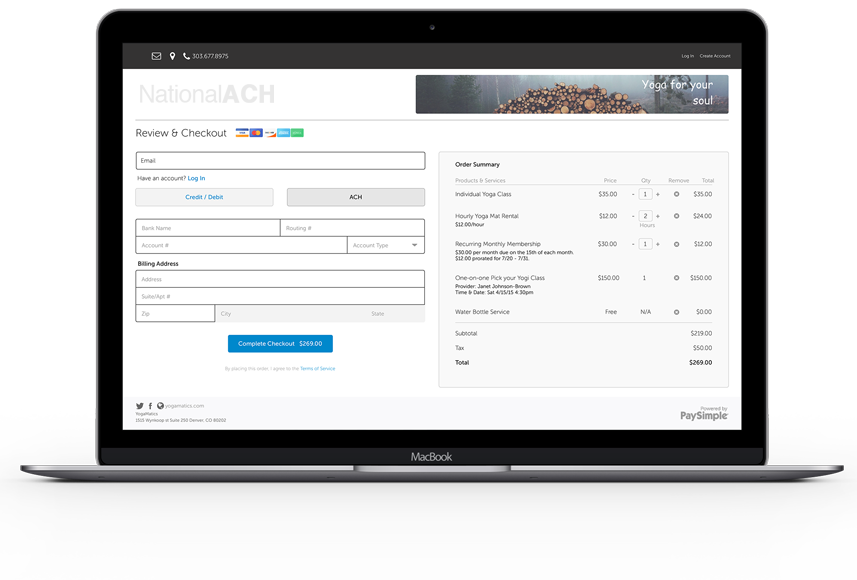How Rates are Set for ACH Processing
What is an ACH Processing Account?
An ACH account enables you to direct debit funds from buyers’ checking or savings accounts and electronically transfer the funds to your business bank account.
An ACH account captures sales from customers who do not have cards, are maxed out on cards, or who simply prefer to pay using ACH direct debit.
Adding an ACH account to payment processing increases profit margins and reduces costs.
Three Elements in ACH Rate Structure
There are three elements in determining the pricing structure an ACH account.
1. Type of transaction being processed through the ACH account
2. Industry classification of the business establishing the ACH account
3. Product or service being sold through the ACH account
Classifications of ACH Account Transactions
Classification of transactions associated with an ACH account is based the way in which consumer authorization is received. Will the merchant receive written ACH account authorization? Or will the merchant be accepting ACH account transactions online or over the phone?
Written ACH account authorizations received from customers for direct debits are considered low risk transactions and rates are correspondingly low. Written authorizations are difficult to revoke because the there is a signature on file for the ACH account transaction.
For example, most people have written authorizations in place allowing an ACH account transactions to direct debit bank accounts for car payments, insurance premiums, rent or mortgage, utility bills and recurring payments for health clubs and other membership or subscription based services. All of these would be considered low risk ACH account transactions
It is unlikely that a consumer will revoke a low risk ACH account transaction that has been authorized in writing. As a result, rates for ACH account transactions with written authorizations have low, flat rate fees. The exact rate charged for an ACH account transaction is based on the number the number of transactions processed each month. The more transactions that flow through an ACH account, the lower the rate.
ACH account transactions initiated online or accepted by phone without written authorizations carry a higher risk since there is no written authorization in place. Rates for these types of transactions can be higher than for written authorization, but this is not always the case.
For example, billers who accept ACH account transactions for online payment of rent, utility bills, tuition, car payments, and similar types of transactions at the biller’s website may still be charged low flat rates. These types of ACH account payments, whether made online, by phone, or by written authorization, are seldom revoked by consumers.
Businesses selling products or services online or accepting ACH account transactions by phone may or may not have higher rates. Much depends upon the types of product and service being sold and the industry classification of the merchant with the ACH account.
How Products/Services Relate to Rates
Some products and services sold online are low for ACH account transactions because there is not much chance of consumers revoking the transaction. For example, a well-established internet retailer selling moderately priced items often can take advantage of flat rate pricing for ACH account transactions.
Other products and services have a higher chance of consumers revoking a transaction. In these cases, an ACH account transaction will be priced at a higher flat rate transaction. Or, the ACH account provider may add a discount rate in addition to a transaction fee.
High Risk ACH Accounts
Certain merchant categories are considered high risk for an ACH account. Common high risk merchant account classifications for an ACH include adult entertainment, travel, electronics, jewelry, virtual goods, tickets, dating, software and games. Merchants in these categories experience a statically greater likelihood of consumers revoking an ACH account transaction.
High risk merchants can certainly take advantage of ACH account transactions to increase sales. Rates generally include a discount rate along with a flat rate transaction fee. Discount rates for a high risk ACH account generally range from 1-3%. The specific discount rate associated with a high risk ACH account depends on the underwriting criteria of the ACH account provider.
Conclusion
Regardless of rate structure, an ACH account always cost merchants less than credit card processing fees. You can save 50-95% for ACH account transactions compared to rates for the same transactions processed with credit cards.
Are you interested in increasing sales & profits with ACH payment processing?
Contact info@nationalach.com today
